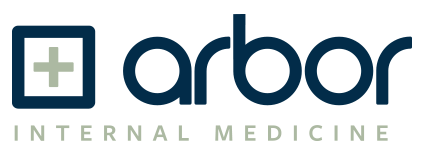Navigating Cholesterol Screening and Treatment
Cholesterol screening and management have long been integral components of preventive healthcare, aimed at reducing the risk of cardiovascular disease (CVD), including heart attacks and strokes. Over the years, guidelines for screening and treating cholesterol have evolved, with a notable shift in approach in 2022 by the US Preventive Services Task Force (USPSTF). As a physician I wanted to share these updated guidelines and their implications for your care.
Previously, cholesterol screening and treatment recommendations were more generalized, often focusing on identifying high cholesterol levels and prescribing medications based a specific cholesterol number and on the presence of one or more risk factors. However, the updated guidelines introduced a more nuanced approach, taking into account individualized risk assessment using tools such as the ASCVD (Atherosclerotic Cardiovascular Disease) calculator.
Under the revised guidelines, physicians typically commence cholesterol screening around the age of 30-35, or earlier for individuals with heightened CVD risk factors like hypertension, obesity, diabetes, or a history of tobacco use. Rather than solely relying on cholesterol levels, the ASCVD calculator factors in various parameters such as blood pressure, medical history, gender, and smoking status to estimate a patient's 10-year risk of experiencing a cardiovascular event. The ASCVD risk calculator is used for patients age 40-75 based on the studies. High cholesterol identified in younger or older patients, while not benefiting from the ASCVD risk calculator, can still discuss with their physician their overall risk factors and decide the best management option for them.
Patients identified as having a 10% or higher risk of a cardiovascular event in the next decade, along with at least one risk factor, are recommended for statin therapy. These medications work by reducing cholesterol production in the liver and decreasing inflammatory hormones, addressing two key contributors to CVD development.
However, lifestyle modification remains a cornerstone of preventive care. Adopting a "healthy vegan" diet—eschewing animal products and processed sugars—has demonstrated efficacy in reducing cholesterol levels and reversing arterial plaque buildup. Notable proponents like Dr. Joel Fuhrman, author of the book Eat to Live, advocate for this dietary approach as a means to mitigate CVD risk factors, including diabetes and heart disease. Engaging in these aggressive diet modifications can yield significant improvements in cholesterol profiles within a relatively short timeframe, typically around six weeks.
Exercise complements dietary interventions by strengthening the heart, lowering blood pressure, enhancing insulin sensitivity, and promoting weight loss.
For individuals with significant familial CVD history or challenges adhering to lifestyle modifications, medication may be warranted. Statins, including atorvastatin, rosuvastatin, simvastatin, and pravastatin, are commonly prescribed as first-line therapy. While generally well-tolerated, statins can elicit muscle aches and, in rare cases, liver irritation and worsened insulin resistance. Initiating therapy at lower doses and gradual titration can mitigate these adverse effects.
Nevertheless, the decision to initiate statin therapy should be weighed carefully, considering the potential risks and benefits for each patient. The primary goal is to prevent cardiovascular events, particularly in individuals with high-risk profiles unlikely to achieve adequate risk reduction through lifestyle modifications alone.
For patients with intermediate CVD risk scores (7.5%-10%), a collaborative discussion between the physician and patient is paramount to determine the appropriateness of statin therapy. Additionally, coronary calcium scoring—an imaging technique that assesses arterial plaque buildup—can offer valuable insights for patients with borderline risk scores, guiding treatment decisions and potentially averting unnecessary medication use.
In conclusion, the landscape of cholesterol screening and treatment has evolved to embrace a more personalized, risk-based approach. While statin therapy remains a cornerstone of CVD prevention, lifestyle modifications wield considerable efficacy and should be emphasized as first-line interventions. By navigating the intersection of evidence-based medicine and individual patient needs, physicians can optimize cardiovascular health outcomes and empower patients to make informed decisions regarding their care.
Resources

